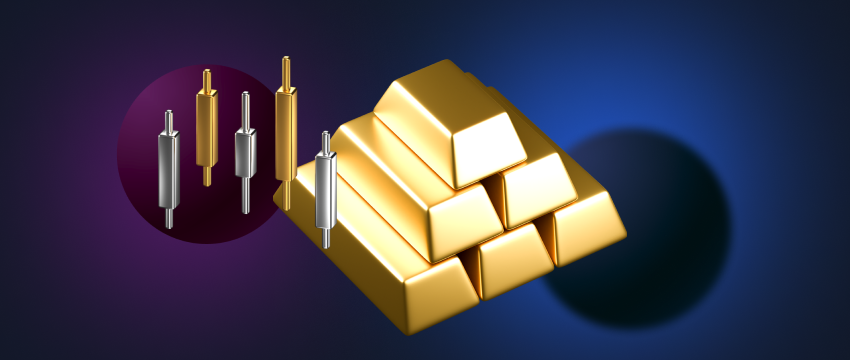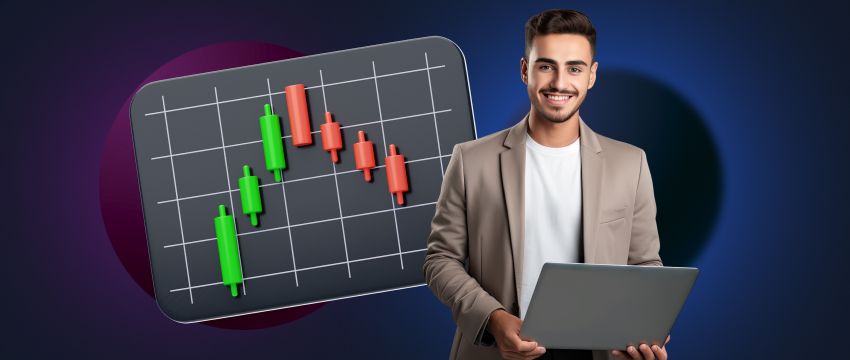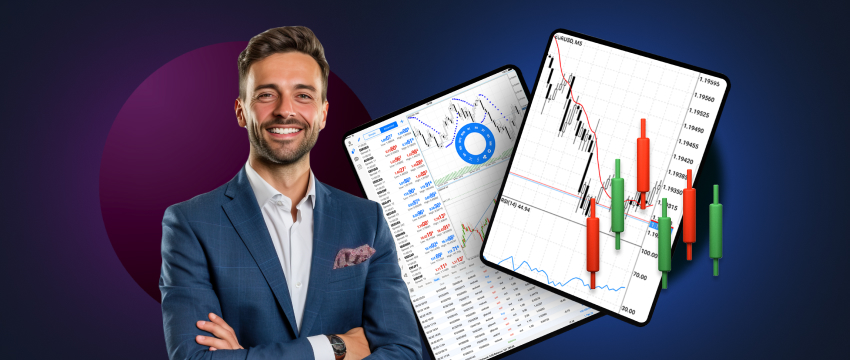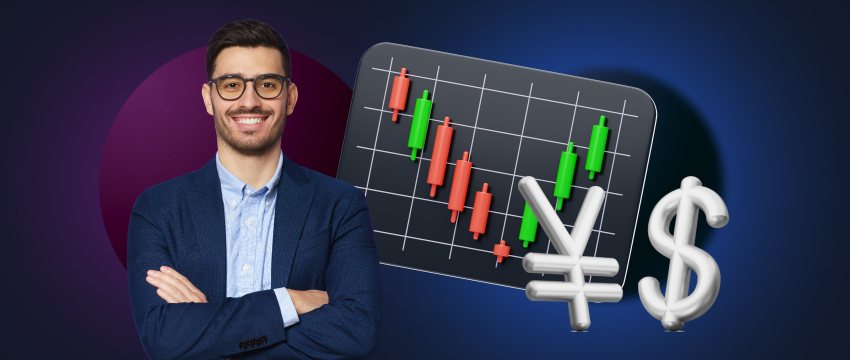Metals trading involves buying and selling various metals in financial markets. This includes precious metals like gold, silver, platinum, dan palladium.
It also includes industrial metals such as copper, aluminium, and nickel. Traders engage in metals trading to hedge against inflation, speculate on price movements, and diversify investment portfolios.
As a result, there are two primary categories of metal markets:
- Precious (like platinum, silver, or gold)
- Industrial (like copper, lead, or aluminium)
These metals’ prices can signify various things. Copper plays a crucial role in motors, wiring, and electronic devices.
Analysts often use copper demand to gauge overall economic health because industries rely on it for manufacturing. When demand for copper rises, it signals increased production and economic growth.
Although gold holds value for jewellery, international investors frequently regard it as a “safe haven.” This perception often drives prices higher during economic instability or downturns.
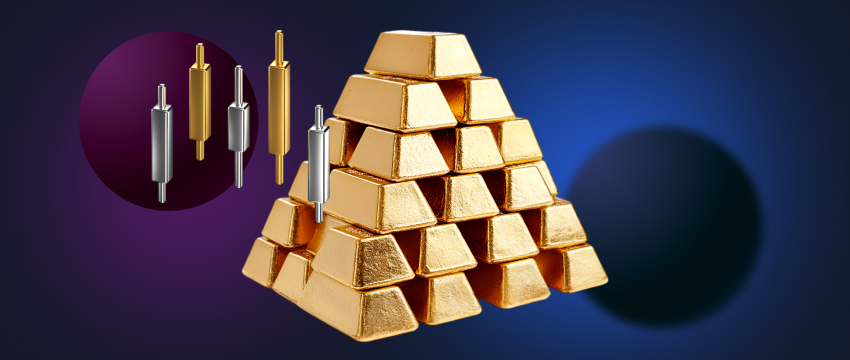
Precious metals: Investment insights & market factors
Traders buy and sell gold, silver, and platinum on the precious metals market through physical purchases, futures contracts, dan CFDs.
Market demand, supply, and dollar fluctuations influence price changes, making precious metals a useful tool for risk diversification.
London is a major price centre, and gold and silver in particular are important factors in the formation of world prices.
Investors regard precious metals as smart investments that help reduce portfolio risk, especially during uncertain economic times.
However, because they don’t produce cash flow like stocks or bonds do, their value is speculative.
Long-term positive outcomes are feasible, but supply chain variables and market conditions, such as producer tactics or mining technology, may influence price swings.
Which precious metals are available for trading?
Traders often buy and sell platinum, silver, gold, palladium, copper, nickel, dan aluminum as komoditas. In addition, there are minor metals and base metals like lead and zinc.
Although some exchanges now offer cobalt and molybdenum metal contracts, traders only trade these in small volumes.
Other metals, like lithium, might have significant uses, traders don’t currently trade them extensively in pasar keuangan.
The most frequently traded precious metals are gold, silver, and platinum. Both gold and silver have been used as currency throughout history, and they are still used to some degree today.
Although people widely use all three metals in jewelry, silver and platinum also serve various industrial purposes, while industries use gold less frequently for these purposes.
Gold serves as a store of value, an alternative investment, an inflation hedge, and an asset that remains largely uncorrelated.
The UK’s Royal Mint defines a metal as “precious” if it is naturally occurring and relatively rare. Gold ranks as the most widely held and traded of these metals, platinum stands as the rarest, and silver remains the most common.
The World Gold Council states that miners have extracted less than 213,000 tonnes of gold over time, and people still use most of it today.
How do metal market prices fluctuate?
Supply and demand influence metal prices, just like any other financial market. Expectation of supply and demand in the future also influence prices.
Researching, reporting, and consulting on almost every single metal have given rise to a significant service industry.
Many websites now track changes in metal prices, but events, like the discovery of a new deposit or the creation of a new application that raises demand for a certain metal, can cause significant price volatility.
Learning the precise extraction and production patterns for the assets you have selected, as well as the nature of fluctuating demand from industrial consumers, will help you become a better metals trader.
A number of factors influence supply and demand levels, including:
Supply:
- Production/extraction cost
- The price of storage and transportation
- Policies of the government, including taxes, regulations, and subsidies
- Monetary policy
- Employee concerns, like strikes in the mining industry
- Natural catastrophes
Demand:
- Level for infrastructure improvements
- Manufacturing and construction industry activity
- Accessibility of substitute or less expensive metals
- Volatility of the market
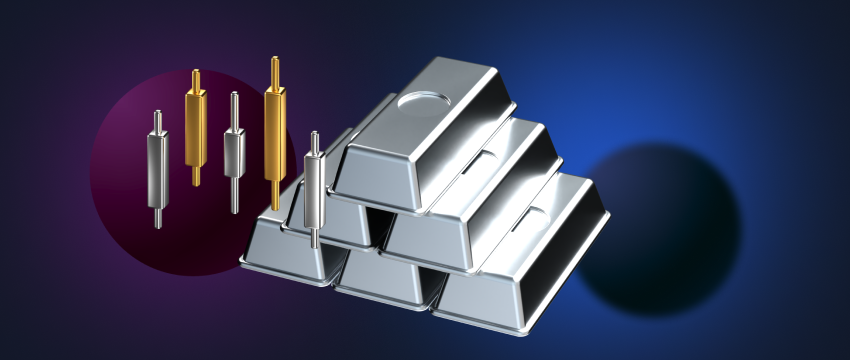
Metals CFD trading
With contracts for differences (CFDs), traders can speculate on how the prices of financial instruments will change without actually holding the underlying asset.
Due to their cash settlement, CFDs enable traders to follow their strategies by taking both long (buy) dan short (sell) positions.
For instance, a trader may initiate a long position with the goal of the price surpassing their entry level if they believe that the price of gold will rise.
When the price hits a favourable level, the position can be closed to realise the potential revenue.
On the other hand, a trader may take a short position if they anticipate a drop in the price of gold. In this case, the goal is for the price to drop below the entry point, allowing the trader to realize a revenue through short position closure or buyback.
Gold: The timeless safe haven in times of crisis
Gold is special because of its flexible nature, heat and electrical conductivity, and durability (it doesn’t rust or corrode). Although it has some industrial uses in electronics and dentistry, its main uses are as a base for jewellery and as money.
Every single day of the week, the market determines its value. The primary factor influencing gold’s price is sentiment; supply and demand have less of an impact.
This is due to the fact that the amount of above-ground, hoarded gold greatly exceeds the new mine supply. In other words, the price decreases when hoarders decide to sell.
A fresh supply is swiftly consumed when they wish to purchase, which raises the price of gold.
There are a number of reasons why people are more inclined to keep the shiny yellow metal:
Systemic financial issues:
Gold has frequently been sought after as a secure store of value when banks and money are seen as unstable and/or political stability is questioned.
Inflation impacts in metals trading:
People frequently turn to gold as an asset that will hold its value when real rates of return (RoR) in the bond, equity, or real estate markets are negative.
Political crises or war:
People have always hoarded gold in response to conflict and political upheaval. You can turn your lifetime savings into a portable asset, keeping them safe until you’re ready to exchange them for essentials like food, shelter, or secure transportation to a safer place.
How silver’s industrial uses impact its price movements
In contrast to gold, the price of silver fluctuates between its industrial metal status and its perceived value as a store of value.
Because of this, price swings in this market are more erratic than those in the gold market.
The industrial supply/demand equation for the metal has an equally significant impact on silver’s price, even though it basically trades similarly to gold as a commodity to be hoarded.
New developments have always caused that equation to change, including:
The introduction of the digital camera has overshadowed silver’s once-dominant role in the photography industry (silver-based photographic film).
In the East’s emerging market economies, the emergence of a substantial middle class has led to a surge in demand for industrial goods that use silver inputs, such as medical supplies dan electrical appliances.
Due to its qualities, silver was demanded for everything from electrical connections to bearings.
Silver’s use in microcircuit markets, superconductor applications, and batteries. It’s unclear if or how much these developments will impact silver’s overall demand outside of investments.
One thing remains true: silver is not only used in the fashion industry or as a store of value; its uses influence its price.

Final Thoughts on Metals Trading
Precious metals provide special protection against inflation. They cannot inflate, have inherent value, and pose no credit risk. This means that no one can print more of them.
Additionally, they provide actual upheaval insurance against monetary, political, or military disruptions.
They also offer a low or negative correlation to other asset classes, such as saham and bonds, according to investment theory. This implies that a portfolio containing even a small portion of precious metals will have lower risk and volatility.
Trading precious metals is a practical and efficient way to diversify your portfolio. To potentially succeed with them, you must first understand your objectives and risk tolerance.
Disklaimer: This material is for general informational and educational purposes only and should not be considered investment advice or an investment recommendation. T4Trade is not responsible for any data provided by third parties referenced or hyperlinked in this communication.
